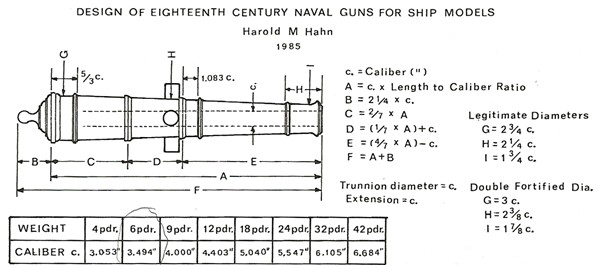I’m building a ship model. A small Bermuda rigged privateer thought to be from the Chesapeake bay. 70’ long, 18’ wide single deck with a 9’ hold.
so I got little deck guns.
What size would such a gun be
Barrel per scale is 4’6”, 9” breech, truck about 20” tall. Not going to shake the pillars of heaven here.
Could this be a four pounder, or a 1-11/2 swivel gun on steroids

so I got little deck guns.
What size would such a gun be
Barrel per scale is 4’6”, 9” breech, truck about 20” tall. Not going to shake the pillars of heaven here.
Could this be a four pounder, or a 1-11/2 swivel gun on steroids










